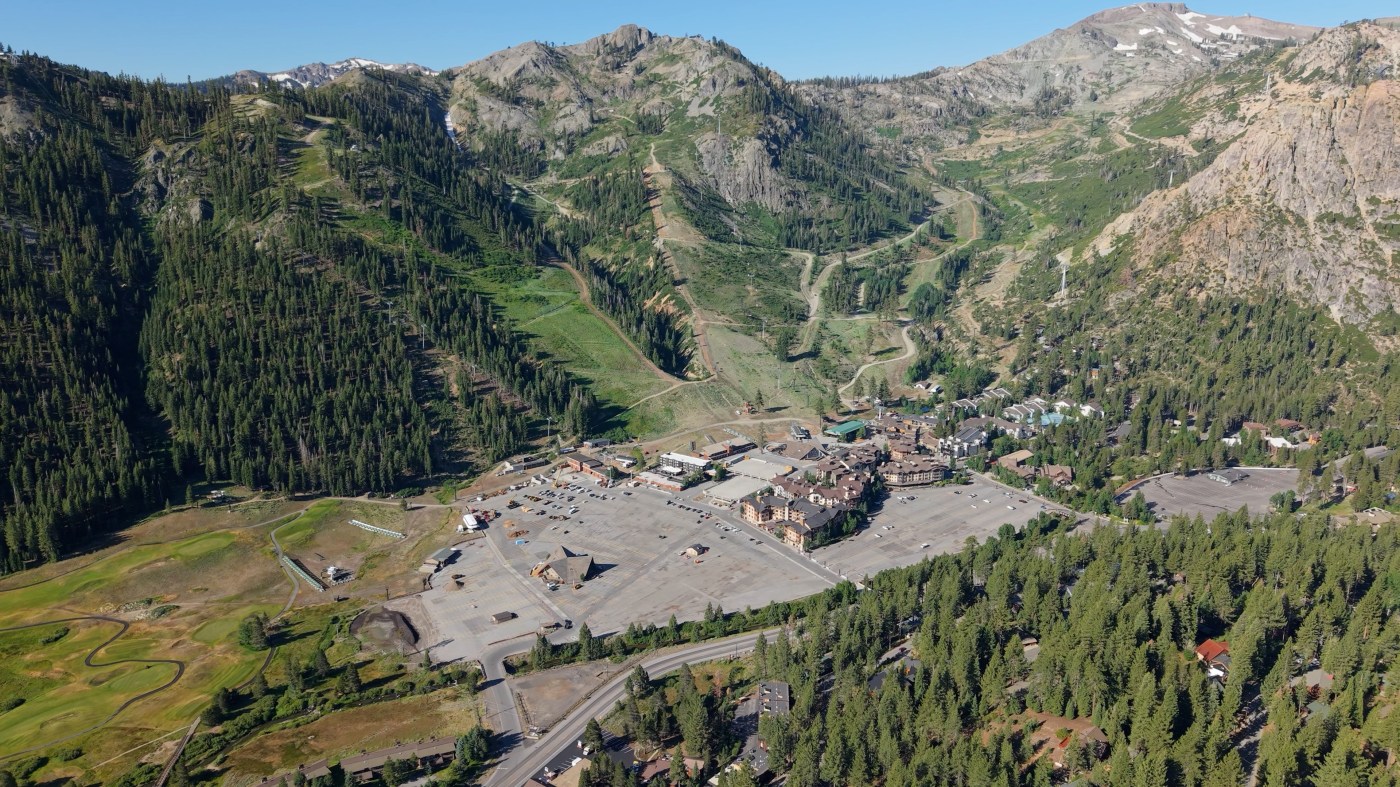
After 14 years of public hearings, lawsuits and environmental protests, the most contentious development battle in the Lake Tahoe area over the past generation finally reached a truce Tuesday.
Palisades Tahoe ski resort, formerly Squaw Valley, in 2011 proposed building 2,184 hotel and condominium rooms, a water park, wave pool, indoor river, simulated indoor sky diving facility, and 278,000 square feet of commercial space at Olympic Valley, next to its ski area, a popular destination with Bay Area visitors that gained famed as the site of the 1960 Winter Olympics.
Local officials in Placer County had approved the plans in 2016, but environmentalists won a lawsuit after arguing the project would bring huge amounts of traffic and wreck Tahoe’s rustic character. Although the company agreed last year to scale back the plans, more lawsuits loomed.
On Tuesday, however, both sides announced compromise. Under the settlement agreement between Palisades Tahoe and two environmental groups, the League to Save Lake Tahoe and Sierra Watch, the ski resort will be able to build 896 new hotel and condo rooms (about a 60% reduction from the original plan and a 40% reduction from revised plans). It also will construct 20% less commercial space, decreasing the total from 278,000 square feet to 222,000 square feet. And there won’t be a water park, indoor sky diving or lazy river, although the company can still build a recreation center with climbing walls, ziplines and swimming pools.
The development is planned to be built on parts of the vast parking lot that Palisades visitors encounter when they drive onto the 6,000-acre property, which is the largest ski resort in California.
“We think it sets an example of how we can work together to protect the place we love,” said Tom Mooers, executive director of Sierra Watch.
“People are still going to have the incredible experience when they turn off Highway 89 and see the beautiful meadows and the creek and the mountains,” he said. “But the view of the mountains won’t be blocked by a giant indoor water park. We think we’ve been able to protect the awesome sense of place here.”
The resort, owned by Denver-based Alterra Mountain Company, is trying to offer more year-round activities, said Amy Ohran, president and chief operating officer of Palisades Tahoe.
After years of battles, she said, it was time to find common ground. The two sides spent seven months in settlement talks.
“To get a different outcome we had to take a different approach, a new direction,” she said. “Really meaningful progress happens through collaboration. We feel really good about the outcome. It’s an exciting day.”
Ohran said the compromise plan will go next to the Placer County Board of Supervisors for approval. If the supervisors approve it, as expected, Ohran said that construction could begin by 2027 or 2028.
Ski resorts across the United States and other parts of the world — from Vail to other Tahoe resorts like Northstar and Heavenly — have worked in recent years to diversify their facilities to include mountain biking, music festivals, rock climbing, and other activities. The goal is not only to expand revenue but also to hedge against climate change, which has made droughts and heat waves more severe, threatening the future stability in winter months of the ski industry.
Palisades holds a key role in California history.
First opened in 1949, northwest of Tahoe City in the Sierra Nevada range, the resort had only one chair lift, two rope tows, and a 50-room lodge in the mid-1950s. Alex Cushing, an attorney from New York who visited on a ski vacation, and Wayne Poulsen, a former Pan Am pilot and champion skier who purchased land in the area from Union Pacific Railroad, formed a partnership to build it.
Cushing lobbied the International Olympic Committee to host the 1960 Winter Olympics. He enlisted the help of then-Gov. Goodwin Knight and state lawmakers. In 1956, California was selected over Innsbruck, Austria; St. Moritz, Switzerland and Chamonix, France. It was the first Olympics held in the United States since the 1932 summer games in Los Angeles and 1932 winter games in Lake Placid, New York.
Cushing led an $80 million fast-paced effort to build a modern ski resort at the site, which sits at 6,200 feet surrounded by national forest land. He enlisted Walt Disney to personally design the opening and closing ceremonies. The games were the first broadcast live on U.S. television, with Walter Cronkite as narrator.
President Eisenhower sped up construction of Interstate 80 to make sure the roadway was ready in time for the Olympics. The games were popular on TV, and convinced millions of Californians for the first time that skiing in the Sierra Nevada could be part of the California lifestyle, a relatively easy drive from the Bay Area and other urban centers on weekends.
The resort changed its name in 2021 from Squaw Valley to Palisades, a reference to the area’s iconic granite cliffs. Then-resort president Dee Byrne called the switch, which was supported by the local Washoe Tribe, as “the necessary and right thing to do” due to the former name being a derogatory term for American Indians.
As part of Tuesday settlement, Palisades Tahoe agreed not to seek any additional development on the proposed building site for 25 years.
The agreement cuts daily car trips by an estimated 38% from the prior plan. Many of those vehicles would have entered the Tahoe Basin, environmentalists said, increasing traffic, air pollution, and water pollution that can threaten the lake’s water quality and clarity.
“Lake Tahoe is a treasure that’s here to be loved and experienced by everyone,” said Darcie Goodman Collins, CEO of the League to Save Lake Tahoe. “And it deserves to be protected for everyone.”